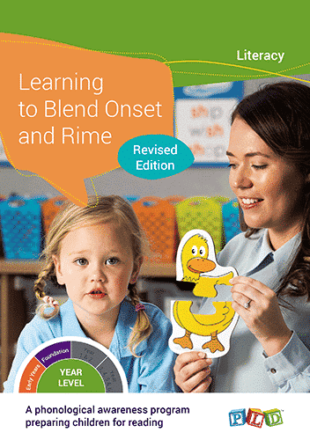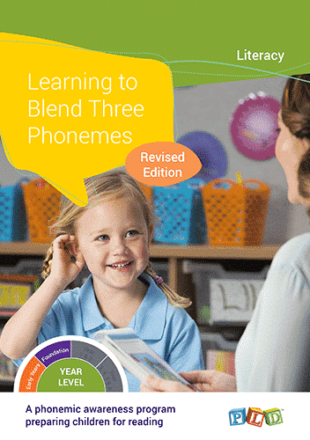Is w a Continuous or Stop Sound
In general phonological awareness develops from an awareness of larger units (such as syllables and onset-rime) to an awareness of smaller units (phonemes). Teaching a child to blend and segment words is an important step in building phonological and phonemic awareness which in turn lead to strong literacy and reading skills.
Phonological awareness (and more specifically phonemic awareness) appears to unlock the mystery of word recognition and spelling. As David Kilpatrick points out, orthographic mapping anchors new words learned to their pronunciation and this awareness of the sounds in words (i.e. phonological awareness) provides the foundation on which literacy skills develop. Once a child is conscious of the sounds that comprise words, the mapping of the sounds to the alphabetic system occurs with much greater ease.
"Because phonemes are the units of sound that are represented by the letters of an alphabet, an awareness of the phonemes is the key to understanding the logic of the alphabetic principle and this the learnability of phonics and reading." (Snow, Burns & Griffin, 1998:52)
Munro (1989) explains that a child's ability to attend to phonemes in words provides the child with the "hooks" on which knowledge of letter clusters is hung.
Phonological Awareness Skill: Blending
The phonological awareness prerequisite for reading regular CVC (consonant-vowel-consonant) words such as 'fig', 'tan' and 'mat' is the skill of blending. Research supports the importance of blending, with suggestions "success or failure in early blending has particularly important ramifications" (Neilson, 2020). If we present reading activities to young learners without attention to pre-requisite skills such as blending, we do not set children up for success. There has been increasing engagement about how to teach blending. Continuous blending and discontinuous blending are the two most commonly proposed techniques.
Continuous blending presents the sounds without the pauses and in an exaggerated way with each sound extended into the next. For example, "mmmmaaaat, makes the word?" Some researchers are proposing that this form of blending, in which sounds impact other sounds around them (i.e. coarticulation) makes the blending task more natural and possibly acquired earlier.
Discontinuous blending refers to the presentation of sounds within a word with a pause between sounds. For example, "/m/ (1-2 second pause) /a/ (1-2 second pause) /t/ makes the word?" It is common practice in testing and teaching to present blending tasks in this way. It is believed that presenting blending tasks with pauses between sounds helps to demonstrate to students that words are divisible into parts.
Which produces superior results for early decoding?
The research is still limited and there are so few studies that directly compare the two approaches. However, what the research does indicate is that continuous blending is being increasingly discussed by researchers as a potentially early facilitator of decoding, and that continuous blending often results in improved accuracy of blending, particularly in the early stages of literacy development.
How does PLD suggest that blending is presented?
As children develop literacy skills, their phonological awareness skills progress, from an ability to attend to onset-rime, to the phonemic awareness of individual sounds within words. PLD's approach to blending is therefore built around this developing phonological awareness with consideration of the research suggesting continuous blending may aid the development of decoding in the early stages of literacy development. Our approach focuses on a progression from blending onset-rime, to blending CVC words utilising continuous blending. As students progress through a structured synthetic phonics program they will further develop blending skills and the ability to blend multisyllabic words using a discontinuous blending approach.
As children develop blending skills, they can progress onto the next step which requires greater skill. However if a child is struggling with a blending task, understanding this progression of skill development allows teachers to easily add in increased support and move back a step to allow skill consolidation. At any stage, if a child is experiencing difficulties in blending, moving down a step will provide the additional support they require to be successful.
How have PLD updated our programs?
The cards Learning to Blend Onset & Rime and Learning to Blend Three Phonemes are grouped according to these steps, however, each also includes tips on how to challenge or offer support so all students can be successful in learning the important skill of blending. Aim for little but often (i.e. 2-3 minutes of blending activities several times a day) until the skill has been established.
Learning to Blend Onset & Rime
Learning to Blend Three Phonemes
Any master or PhD students interested in exploring the most effective way to teach blending skills, PLD would be very interested in supporting and working with you using our programs. Please get in touch with us via email to [email protected].
View the updated programs in full
PLD offer the functionality for every publication to be previewed online. Click on the programs below, then the 'preview' button.
-

Learning to Blend Onset and Rime
-

Learning to Blend Three Phonemes
References:
- Gonzalez-Frey, S. & Ehri, L. (2020) Connected Phonation is More Effective than Segmented Phonation for Teaching Beginning Readers to Decode Unfamiliar Words. Scientific Studies of Reading, DOI: 10.10 80/10888438.2020.1776290.
- Kilpatrick, D. (2016). Equipped for Reading Success. Casey & Kirsch Publishers, New York.
- Munro, J. (1989) Assessing & Teaching Phonological Awareness. ACER, Victoria.
- Neilson, R. (2020) The Blending Enigma: What is Best Practice for Teaching Sounding Out and Blending? LDA Bulletin. 52 (1), 35-37.
- Snow, C., Burns, S. & Griffin, P (Eds.) Preventing Literacy Difficulties in Young Children. National Academy Press, Washington DC.
- Weisberg, P., Andracchio, B. & Savard, C. (1989) Oral Blending in Young Children: Effects of Sound Pauses, Initial Sound and Word Familiarity. The Journal of Educational Research. 82 (3), 139-145.
- Weisberg, P. & Savard, C. (1993) Teaching Preschoolers to Read: Don't Stop Between the Sounds When Segmenting Words. Education and Treatment of Children. 16 (1), 1-18.
Source: https://pld-literacy.org/continuous-or-discontinuous-blending-for-early-readers-what-does-the-evidence-say/
0 Response to "Is w a Continuous or Stop Sound"
Postar um comentário